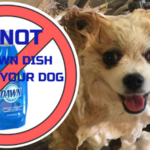How Do You Know If Your Dog Needs Glands Expressed
When you bring a dog into your life, you’re making a lifelong commitment to love and care for them. As a pet parent, it’s your responsibility to ensure your furry friend is always healthy and happy. One of the most common health issues that many dogs face is anal gland problems. Anal glands are small sacs located on either side of their anus that secrete fluid, which dogs use to mark their territory and communicate with other dogs.
If you’re wondering whether your dog needs their anal glands expressed, then you’ve come to the right place. In this article, we’ll discuss everything you need to know about anal gland problems in dogs, including the signs that your dog needs their anal glands expressed, how often they should be expressed, and what can cause these issues.
Signs That Your Dog Needs Their Anal Glands Expressed
The first thing you need to know is how to identify if your dog has an issue with their anal glands. Some of the most common signs of anal gland problems include:
1. Scooting: If you notice your dog dragging their bottom along the ground or carpet, it could indicate that their anal glands are full.
2. Licking or Biting: If your dog keeps licking or biting around their rear end area excessively, it could be a sign that they need their anal glands expressed.
3. Foul Smell: If you smell a strong odor coming from your dog’s rear end area, it could be due to an infection caused by full anal glands.
4. Pain or Discomfort: If your dog seems uncomfortable while sitting down or shows signs of pain when defecating, it could indicate that their anal glands are impacted.
5. Swollen or Red Anus: If your dog’s anus looks swollen or red, it could indicate that there is inflammation caused by impacted anal glands.
How Often Should You Express Your Dog’s Anal Glands?
It’s essential to understand that not all dogs have the same anal gland expression needs. Some dogs may never need their anal glands expressed, while others may require frequent expressions. Typically, smaller dog breeds are more prone to anal gland problems because their anal glands are smaller than larger breeds.
The frequency of expressing your dog’s anal glands depends on various factors such as breed, size, activity level and diet. However, on average, most dogs need to have their anal glands expressed every three to six months. If your dog shows any of the symptoms mentioned above, you should take them to the vet immediately.
What Causes Anal Gland Problems in Dogs?
Anal gland problems can occur due to several different reasons. Some of the most common causes include:
1. Diet: Feeding your dog a low-fiber diet can cause constipation and lead to anal gland problems.
2. Allergies: Allergic reactions can cause inflammation and irritation in the skin around the anus, leading to impacted anal glands.
3. Parasites: Parasites like fleas and ticks can irritate your dog’s skin around the anus, leading to inflammation and impacted anal glands.
4. Infection: Bacterial infections can lead to inflammation and infection in your dog’s anal glands.
5. Underlying Health Conditions: Certain underlying health conditions, such as hypothyroidism or diabetes, can increase your dog’s risk of developing anal gland issues.
Conclusion
In conclusion, taking care of your dog’s hygiene is essential for their overall health and wellbeing. Knowing how to recognize the signs of anal gland problems and when your dog needs their glands expressed is crucial in preventing further complications related to this issue. Regular checkups with your veterinarian will help ensure that your furry friend stays healthy and happy throughout their life. Remember always to give them enough love and attention they deserve!



